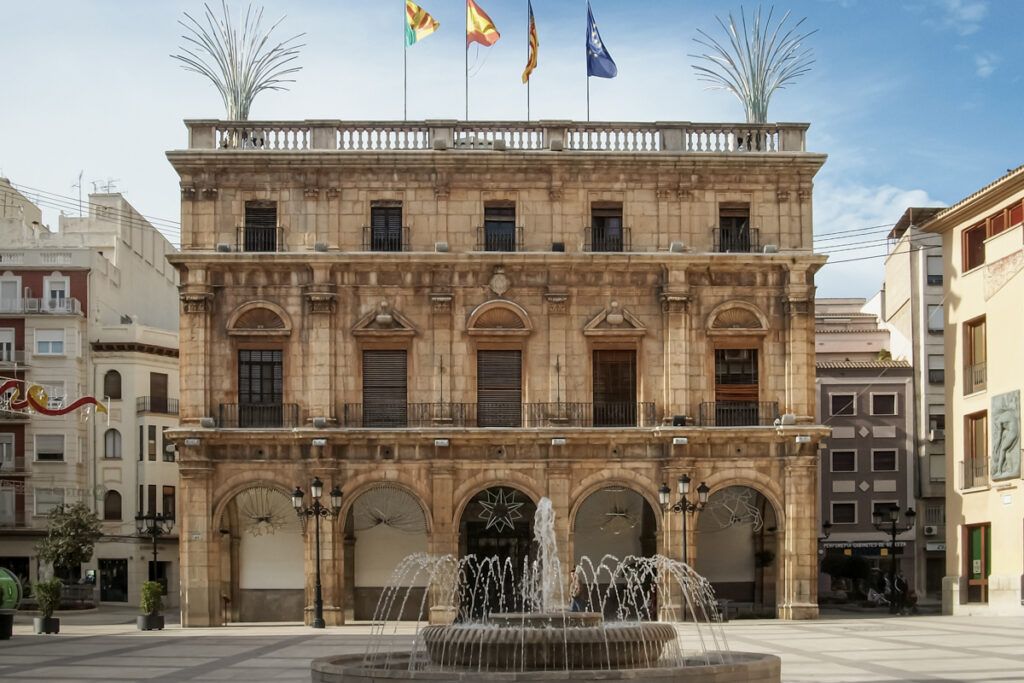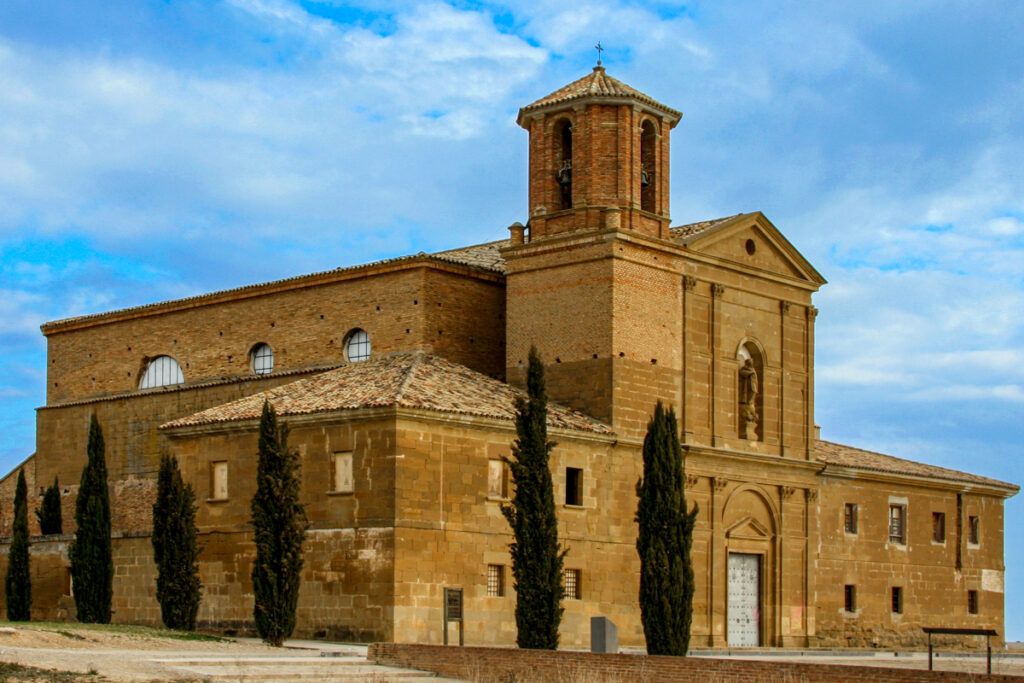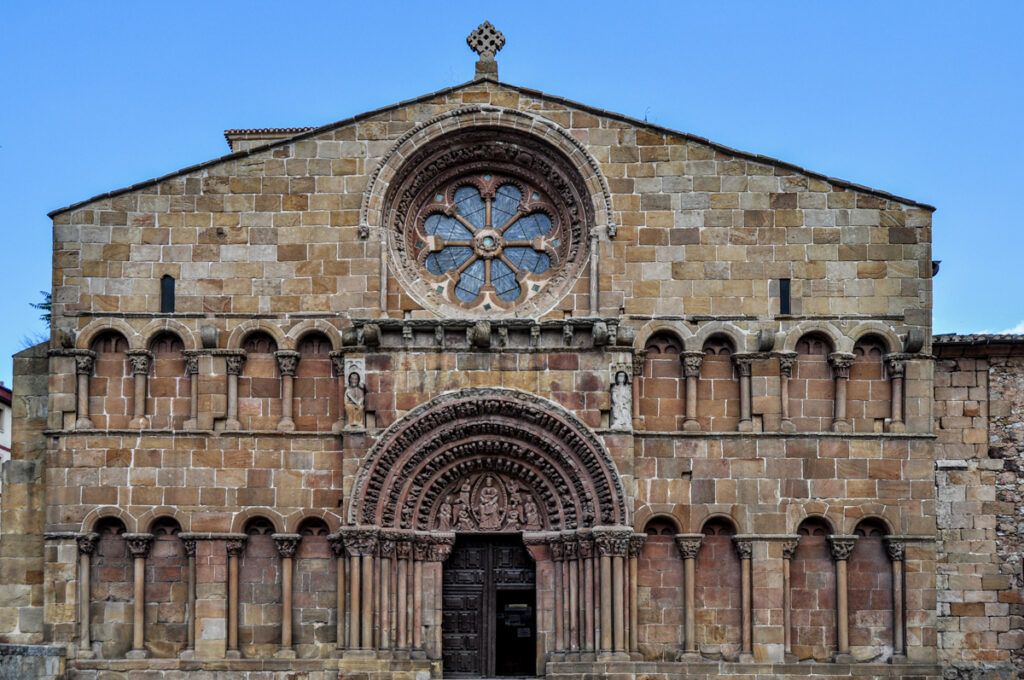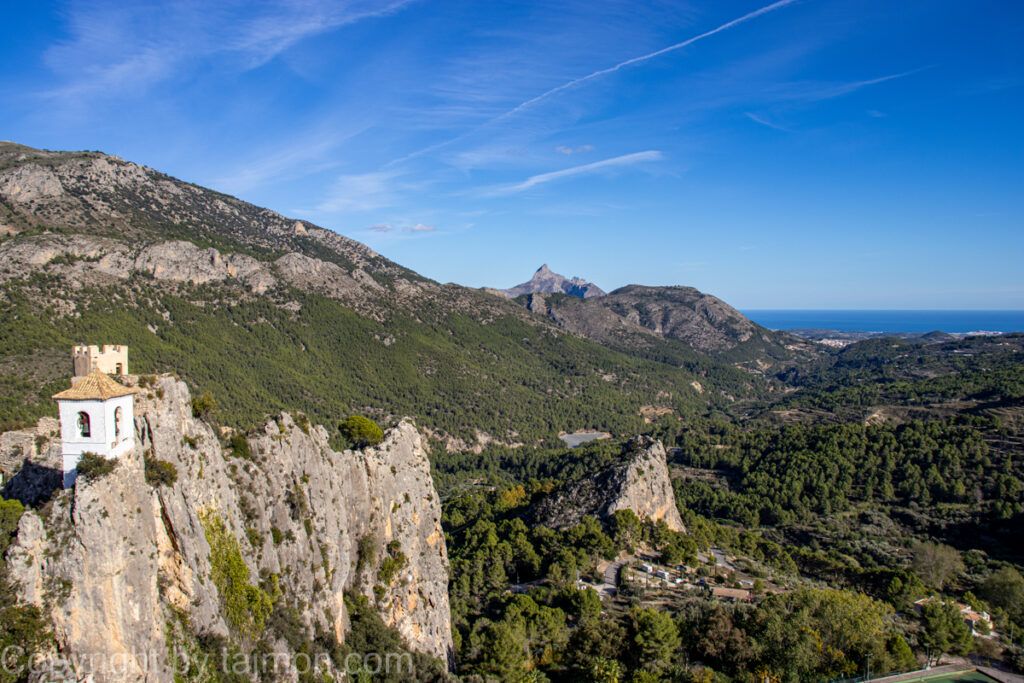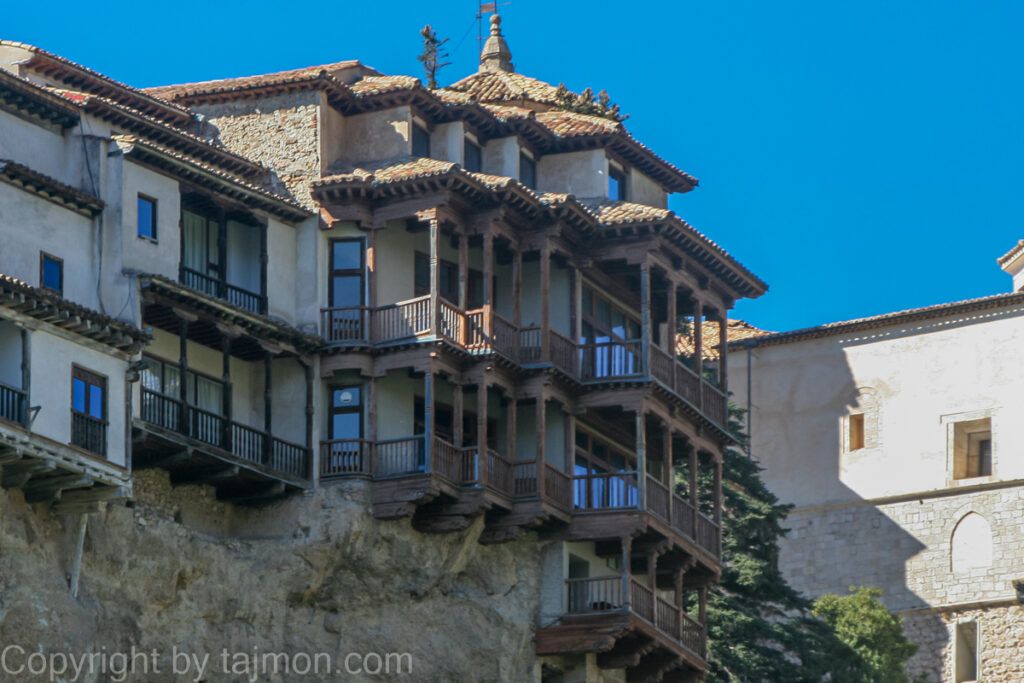Town Hall
If you want to see what the seat of the city authorities looks like, you cannot miss the Town Hall, which is located on Plaza Mayor, next to the cathedral and bell tower. This is a town hall that offers a rich and diverse history, architecture, and art.
The Town Hall was built in 1711 by architect Francesc Maristany, on the site where the former royal palace was located. It is a building of Baroque and Neoclassical architecture, which combines elements of stone, brick, and stucco. Its facade is divided into three parts, with the middle one being higher and protruding forward. On the ground floor, there are windows with wrought iron grates, on the first floor windows with balconies and pilasters, and on the second floor windows with cornices. At the top of the facade, there is a triangular pediment with the coat of arms of the city and the inscription “Ayuntamiento de Castellón de la Plana”. The whole is topped with a balustrade with vases and statues.
The interior of the Town Hall is richly equipped and decorated, preserving many original elements and furniture. It is worth paying attention to the beautiful stairs made of marble and wood, which lead to the upper floors. On the ground floor, there are rooms and offices where officials and councilors work. On the first floor, there are rooms and offices where the mayor and deputy mayors receive. On the second floor, there are rooms and lounges where ceremonies and meetings take place.
In the Town Hall, you can also admire many artistic and cultural elements that give it charm and character. It is worth paying attention to the following objects:
- El Salón de Plenos: this is a room where plenary sessions of the city council take place. It is a round-shaped room, with a wooden ceiling and floor. On the walls, there are portraits of mayors and kings, as well as paintings depicting scenes from the city’s history. In the center of the room, there is a table with microphones and lamps, and around it chairs for councilors and guests. At one end of the room, there is a podium with flags and the city’s coat of arms, and at the other a clock and a board with voting results.
- El Salón de Recepciones: this is a room where receptions and ceremonies take place. It is a rectangular room, with a marble ceiling and floor. On the walls, there are mirrors and paintings, as well as souvenirs and trophies. In the center of the room, there is a table with flowers and candles, and around it chairs and sofas for guests. At one end of the room, there is a fireplace with the city’s coat of arms, and at the other a piano and gramophone.
- El Salón de Exposiciones: this is a room where exhibitions and shows take place. It is a rectangular room, with a wooden ceiling and floor. On the walls, there are windows and paintings, as well as boards and posters. In the center of the room, there are tables and display cases, where various works and objects are presented. At one end of the room, there is a door with the city’s coat of arms, and at the other a television and projector.
The Town Hall is not just a building, but also a center of power and culture. In the Town Hall, you can see how the administration and politics of the city function. In the Town Hall, you can also see how the history and culture of the city develop.
